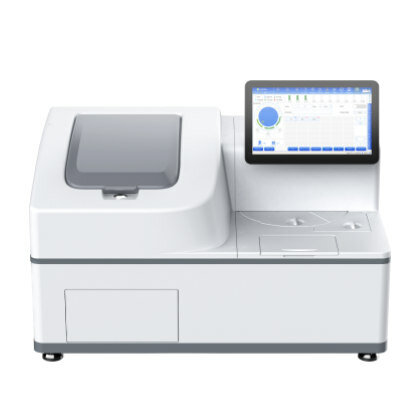Rapidly Aging Mice Given Boost of Young Stem Cells Live Longer, Healthier
By LabMedica International staff writers
Posted on 23 Jan 2012
Laboratory mice bred to age rapidly appear to have grown younger after investigators injected them with stem cell-like progenitor cells derived from the muscle of young, healthy animals. Instead of becoming ill and dying early as the control mice did, animals that received the stem/progenitor cells improved their health and lived two to three times longer than expected.Posted on 23 Jan 2012
These findings were published in the January 3, 2012, issue of the journal Nature Communications. Earlier studies have shown stem cell dysfunction, such as poor replication and differentiation, in a variety of tissues in old age, but it is not been determined whether that loss of function contributed to the aging process or was a result of it, explained senior investigators Johnny Huard, PhD, and Laura Niedernhofer, MD, PhD.
Dr. Huard is professor in the departments of orthopedic surgery and of microbiology and molecular genetics, University of Pittsburgh School of Medicine (Pitt; PA, USA), and director of the Stem Cell Research Center at Pitt and Children’s Hospital of Pittsburgh of UPMC. Dr. Niedernhofer is associate professor in Pitt’s department of microbiology and molecular genetics and the University of Pittsburgh Cancer Institute (UPCI).
“Our experiments showed that mice that have progeria, a disorder of premature aging, were healthier and lived longer after an injection of stem cells from young, healthy animals,” Dr. Niedernhofer said. “That tells us that stem cell dysfunction is a cause of the changes we see with aging.”
The scientists studied a stem/progenitor cell population originated from the muscle of progeria mice and discovered that compared to those from normal rodents, the cells were fewer in number, did not replicate as frequently, did not differentiate as freely into specialized cells and were impaired in their ability to regenerate damaged muscle. The same defects were discovered in the stem/progenitor cells isolated from very old mice.
“We wanted to see if we could rescue these rapidly aging animals, so we injected stem/progenitor cells from young, healthy mice into the abdomens of 17-day-old progeria mice,” Dr. Huard said. “Typically the progeria mice die at around 21 to 28 days of age, but the treated animals lived far longer--some even lived beyond 66 days. They also were in better general health.”
As the progeria mice age, they lose muscle mass in their hind limbs, hunch over, tremble, and move slowly and awkwardly. Affected mice that got a shot of stem cells just before showing the first signs of aging were more like healthy mice, and they grew almost as large. More comprehensive examination showed new blood vessel growth in the brain and muscle, even though the stem/progenitor cells were not detected in those tissues.
In fact, the cells did not migrate to any specific tissue after injection into the abdomen. “This leads us to think that healthy cells secrete factors to create an environment that help correct the dysfunction present in the native stem cell population and aged tissue,” Dr. Niedernhofer said. “In a culture dish experiment, we put young stem cells close to, but not touching, progeria stem cells, and the unhealthy cells functionally improved.”
Animals that age normally were not treated with stem/progenitor cells, but the provocative findings urge further research, she added. They speculate that it might be possible one day to suppress the biologic deteriorations associated with aging by delivering a shot of youthful vigor, especially if specific rejuvenating proteins or molecules generated by the stem cells could be identified and isolated.
Related Links:
University of Pittsburgh School of Medicine













